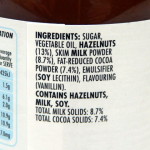The palm oil miracle

Red palm oil’s intense colour is due to its carotene (pro-vitamin A) content; it has one of the highest carotene content in the plant kingdom. — MPOC
By Datuk Seri Mah Siew Keong
The age-old sayings “Health is Wealth” and “You are what you eat” have profound effects on our daily lifestyles.
Our current lifestyles unfortunately involve less physical activity and food choices that are more restrictive and more processed. As a result, we are witnessing modern man’s battle with obesity, diabetes and other degenerative diseases.
Food can be the cause, and sometimes, the cure, for some of these ailments. In this context, our daily diets, made up mainly of three macronutrients – carbohydrates (sugars), protein and fats – often come under scrutiny.
Of these, the most debated is dietary fats, and I am often asked, what about palm oil?
Palm oil has been traced back over 5,000 years as part of the human diet. Various archaeological digs from around the world provide evidence of its long association with humans and food.
However, it was not until the late 1970s, when Malaysia emerged as a major exporter of palm oil, that this dietary fat saw an explosive growth through its versatile functionality in various food formulations.
From cooking oil, margarine and bakery fats to chocolates, confectioneries, and even ice cream and dairy substitutes, palm oil found its niche applications.
As part of our balanced diet, fats must form part of our daily consumption as it provides calories, essential fatty acids and fat-soluble vitamins, as well as imparts the desired taste to our food.
Fat, however, has long been viewed suspiciously, and the housewife, donning her role as the family’s protector, chooses the type of fat for her kitchen use carefully.
And she is right to do so as the quantity and quality of fat we consume has significant impact on our overall health.
Uppermost on her mind is cholesterol, probably the most dreaded word in a housewife’s nutrition vocabulary.
Intake of cholesterol-rich foods is thought a taboo, and should be minimised or even avoided.
These largely come from animal-based foods including meat, dairy products, and animal fats such as butter.
There is practically no cholesterol contribution from the plant sources we eat, including from oils and fats such as coconut, corn, sunflower, olive or palm oil.
So, what is the fuss all about?
We have been told to avoid those foods with excess saturated fats.
Science previously supported the notion that saturated fats increased your blood cholesterol and risk for heart disease.
Unsaturated fats were thought to be beneficial.
The palm oil we consume no doubt has higher saturated fat content than say, olive, corn and soybean oils, for example.
So, is palm oil really bad for your heart health?
We set off to test this hypothesis and it has spread over nearly 25 years of dietary evaluations in human volunteers consuming palm oil and comparing it with many of the oils perceived and marketed for their health benefits.
Take, for example, olive oil, often cited as the golden saviour of Mediterranean populations who remain blessed with lower heart disease than their European cousins.
In several leading institutions around the world, volunteers resorted to foods cooked either entirely with palm oil or olive oil.
Their blood cholesterol, as well as other heart-associated functions, were evaluated throughout the prescribed study period.
We found that palm oil and olive oil resulted in identical non-cholesterol raising effects. Even other nutritional indicators were identical.
These studies showed that palm oil equated with the nutritional and health benefits of olive oil.
Today, we use this to market our palm oil, knowing well through science that there are no negative outcomes compared to olive and most other common vegetable oils in the marketplace.
Meanwhile, independent new data has jumped in from many leading biomedical institutions.
Their latest research suggests we should no longer worry excessively about saturated fats as there is no cause and association with saturated fat intake and heart disease in the population.
Today, the advice is to eat in moderation and lead a healthy lifestyle.
Palm oil has benefited from these science-based outcomes.
However, you should watch your overall sugar and carbohydrate intake.
Science is shifting its target away from dietary fats. That is another story we will tell soon.
So, where are the miracles from palm oil?
Palm oil has some unique nutritional properties and minor antioxidant constituents:
> Today, health professionals work to remove one fat type from our food supply. This is trans fat, introduced by the food industry immediately after World War II and found in polyunsaturated margarine and other fat-rich products.
There is full scientific consensus that trans fat must be completely eliminated, and the natural solution to this is being derived from palm oil. Especially in the United States, the palm solution was amplified through a branded product, containing 50% of its composition as palm oil. This solution to an American nightmare was provided by Malaysian palm oil scientists.
> Palm oil is an excellent frying oil and does not oxidise rapidly when heated. This positive attribute is enhanced by the natural vitamin E tocotrienols in palm.
Eating fried foods regularly raises eyebrows, more so when the oil used like polyunsaturated oils is prone to oxidation at high frying temperatures.
> Palm vitamin E, through a landmark human study, was shown to reduce risk for stroke in ageing populations. The outcomes were so dramatic that several studies are currently evaluating palm vitamin E supplements for better kidney, liver and heart heath.
There is also much interest in its potential anti-cancer properties.
> Red palm oil’s intense colour is due to its carotene (pro-vitamin A) content. Palm has one of the highest carotene content in the plant kingdom. We protect children at risk of blindness due to vitamin A deficiency with just one tablespoon of red palm oil daily.
In a dramatic demonstration in Honduras, breastfeeding mothers successfully protected their infants at risk of blindness by adding Malaysian red palm oil to their maternal diets.
There was a net transfer of palm carotenes from the mother’s breast milk to the infant at risk.
These are but a snapshot of some of the major nutritional and health properties we continue to demonstrate through Malaysian palm oil.
More research is continuing and we should be witnessing additional evidence for the health benefits from palm oil and its constituents in the future.
So, on your next visit to the local supermarket, when you pick up your bottle of subsidised cooking oil (palm olein), please remember it is cheaper because it is subsidised and not because we have compromised its quality or nutritional properties.
If anything, we are working to further enhance the value of the palm oil you purchase, so that it delivers greater health to you, the consumer.
Datuk Seri Mah Siew Keong is Minister of Plantation Industries and Commodities.
Source : Star2.com










Leave a Reply